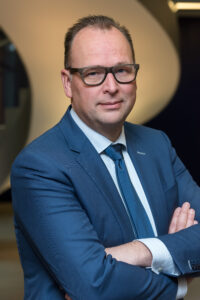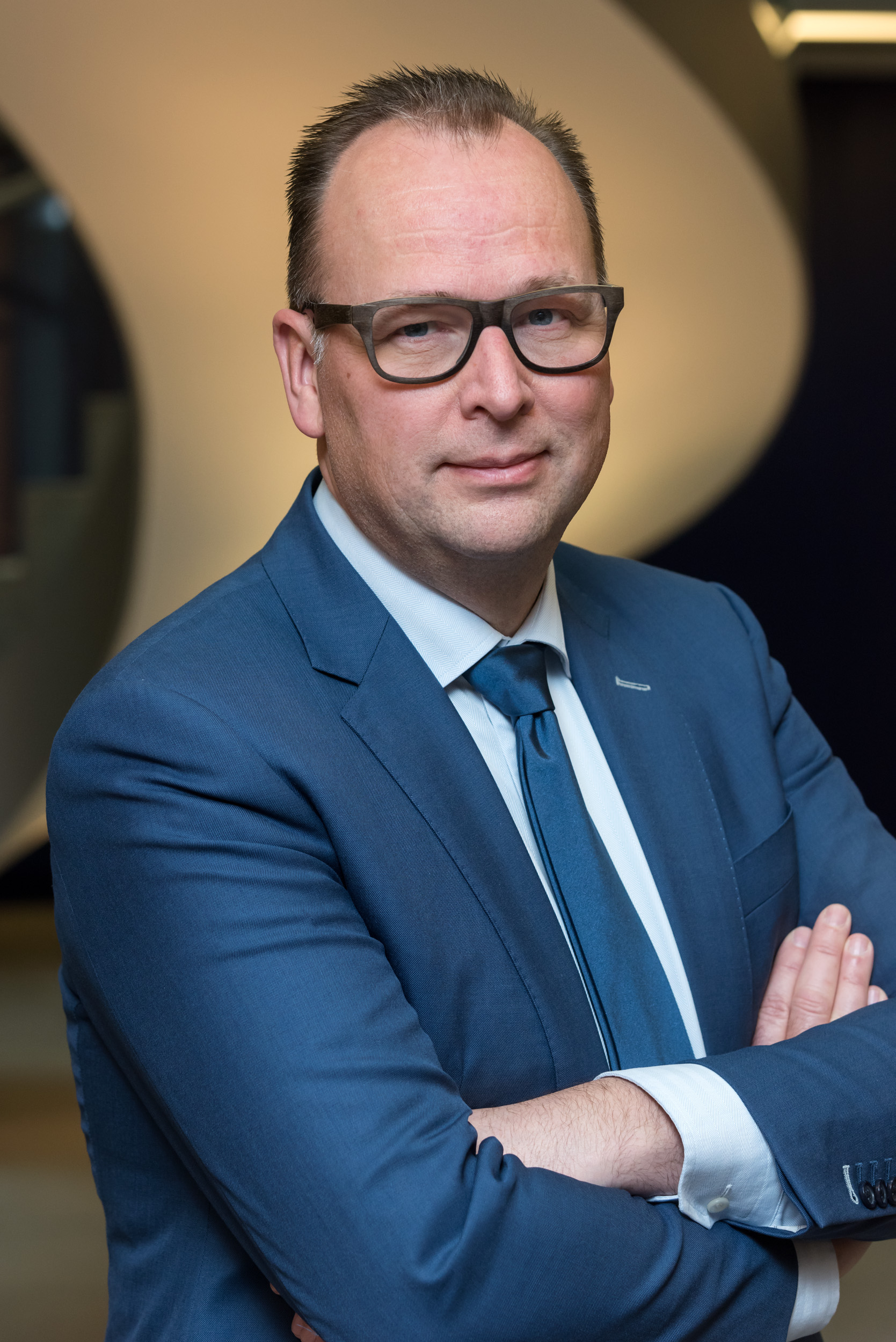Global Advisory Services leader at Arup and member of the International Advisory Board to our Circular Built Environment Network, Carol Lemmens, discusses circular economy, the link between academia and business, and the future leadership of the built environment.
To ensure an international outlook and professional feedback from different perspectives, our Circular Built Environment Network (CBEN) has an International Advisory Board to guide and challenge the 16 industrial PhD’s/postdocs and 2 Grand Solutions Projects in the network. One of the board members of the International Advisory Board is Global Advisory Services leader at Arup, Carol Lemmens, who has 30 years of experience in strategy, change, and business development, and a deep understanding of sustainability and circular economy.
We have talked to him about the current challenges of circular economy, the intersection between academia and business which CBEN represents, and what his role as part of the CBEN advisory board is. To the latter he answers:
“My main role is to challenge. To ask the researchers: how do you make sure that the new perspectives are being embraced by mainstream business. As long as circularity is just a paragraph in your report, I don’t think I’ve been successfully challenging academia. If my challenge results in decision makers in businesses embracing the researcher’s agenda, then we achieved something,” says Carol Lemmens.
The Challenges of Circular Economy
And there is a need for organizations in the built environment to embrace circular perspectives. Currently, the built environment is a big contributor to climate change, resource scarcity, and loss of biodiversity, and it is a sector that is slow to change. The Circular Built Environment Network is a way to ensure an effective and direct knowledge sharing between the newest perspectives from academia and the businesses they’re trying to influence. But what will it take to make a circular transition?
According to Carol Lemmens, one of the big challenges of circular economy is grasping the scope of it and addressing the systematic approach. Inspired by the Ellen MacArthur Foundation, he emphasizes the economy part of circular economy:
“One of the big challenges is to be systemic, and that means bringing in many factors that together create a circular economy. Just looking at the reuse of materials doesn’t mean you develop another economy. The economy is the society in which we live, in which we work, in which we travel, in which we consume, in which we behave in a certain way, in which we produce. It’s all connected. If you talk about a circular economy that’s almost rethinking the whole society. That’s too big to handle by just one individual, one organization, or even one country,” says Carol Lemmens.
Consequently, individuals and organizations must be very aware of the context they are working in, says Lemmens. You must think about not just your direct contribution, but also what your actions and operations mean for the rest of the value chain, what financial institutions you depend on, and how you influence others. When thinking in terms of economy, it’s always about envisioning the bigger whole: “Even from a very positive intent you can also do harm in another place,” says Lemmens.
“The second big challenge is that there is a wealth of experiments and testing in the circular world but not many of these pilot projects really make an impact if you don’t do them at scale. What you often see is that circularity is embraced by well-willing individuals or individual organizations but how do you make sure that the good ideas really scale to viable business? You need to combine sustainable impact, economic impact, and social impact because that is how solutions will survive and strive,” he says.

To Carol Lemmens, circular economy is about a systemic approach. Photo: Paul Carstairs / Arup
Another barrier to scaling circular projects can be governance and legislation. To champion circular solutions, there must be a level playing field, says Lemmens, otherwise it won’t be possible for organizations to practice what they preach. And it isn’t just for organizations and governments that this is an issue. We must all face the question: to what extent are we able to live up to our principles?
“It’s behavioral change, and it’s also about competing interests between short-term and long-term profitability. We are all human and sometimes non-sustainable solutions are still more attractive. Even for myself – if I have to decide between going on a 16-hour long, more expensive trip to a destination by train or doing it for almost nothing in 3 hours by plane, I find I have an angel and a devil on my shoulders. This competing interest is something everyone, every organization needs to deal with,” says Lemmens and continues:
“The more we can show that sustainability is also commercially viable, and the more we can demonstrate that this investment is also good for society, the more we can inspire each other across industries to go for circular solutions rather than just through the idealistic perspective. I don’t think idealism is sufficient to move into a completely new economy.”
Connecting Academia and Business
This is where academia and research come in. By creating solutions and gathering the facts that allow for a convincing case for a circular transition, more of society will follow. But how do you make a good connection between academia and business and how do they influence one another?
“I think there should always be a symbiosis. If you talk about innovation, systemic shifts, rethinking current practices, or inventing new practices, academia, and grand projects can demonstrate how things can be done or create better alternatives for current practices. And I think it’s a unique position; a pre-competitive and pre-commercial stage where organizations can explore what good looks like before pressure and short-termism set in. This is a very crucial aspect in general but certainly also where we really want to rethink whole economies,” says Carol Lemmens.
The challenge in connecting the two is often the pressure of short-term perspectives. Especially in the built environment where there are big financial risks and thus not much appetite for experimenting and embracing new things.
“The challenge is to have joint incentives throughout the value chain. The big hurdle now is that there are many split incentives, and the more you go downstream in the value chain, the less aspirational the incentives are, and the more commercially and transactional it becomes. It’s also a question of responsibility. All parts of the supply chain still only want to be responsible for the little piece they can oversee but circular economy is about taking a wider responsibility – to go for working outcomes rather than just building what the designer has designed, and designing what the client has asked,” says Carol Lemmens, adding that the findings from academia can help push this change.
According to Carol Lemmens, connecting academia and business also brings a realistic perspective on the speed of transition, and the symbiotic relationship sharpens the solutions presented by researchers. Another long-term effect of connecting business and academia is its implication for leadership:
“I think many of the leaders of the future are now in academia. Change in older generations will go much slower than the change in those that are currently in academia. People often say that transitioning to a circular economy will take generations, but I think it’s depending on how quick the turnover of generations in organizations is. I think academia is where the future leadership will develop, and it will bring completely new paradigms in the businesses, by not only driving solutions but also bringing new ethos and behavior,” says Lemmens.
Expectations for a Circular Transition
The Circular Built Environment Network represents these different aspects: new ideas, solutions, and behavior. Furthermore, the diversity of the approaches to circular economy found in the various projects also helps ensure the more systemic approach, Carol Lemmens calls for.
“All these projects form different kinds of systemic interventions, and together they drive a coalition of the willing. All the research pieces are relevant, all contributing with a little step into the right direction by bringing them systemically together and building on each other’s shoulders in terms of outcomes,” says Lemmens and continues:
“What I hope to see is for the research to be brought to real practice; from principles to practice, from theory to reality, from research to real economy. A way to see that would be statements from the associated organizations: This is how we bring this further; this is why this is super relevant for my organization, and this is what we are going to do with it.”
But even though he is hopeful in this regard, Carol Lemmens doesn’t expect the circular transition to go fast:
“I’m hopeful things will change, but we should be patient. It will not go fast, not at all. None of the systemic shifts will go fast because if it goes fast, it becomes a disruption, and I’m not sure we are looking for disruption. Disruption always means there are winners and losers, and I hope that this transformation will create more winners than losers. A transition takes time, it takes energy, long breaths, but also getting along the whole industry and not just a few that want to win. It’s a bit longer journey, but probably a more sustainable journey,” he says.
The last decade has brought about several changes though, and Lemmens acknowledges the advances that can already be seen in the industry and legislation:
“When I started working with circularity seven years ago, it was a very abstract concept, not understood well by everybody, and now it’s part of the legislation, it’s part of the EU taxonomy, it’s part of the positioning of organizations, and it’s shifting the needle in many industries. It’s making people uncomfortable, which is good too, you know? If you are in the midst of a journey, the journey seems to go very slowly, but if you compare it to a few years ago that is not actually the case,” says Carol Lemmens.
The International Advisory Board of the Circular Built Environment Network currently consists of Carol Lemmens, Ken Webster, and Kasper Guldager. The network is co-funded by Realdania and Innovation Fund Denmark.







